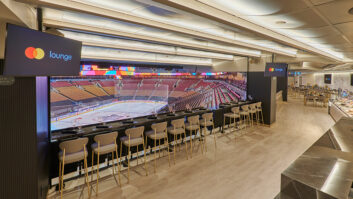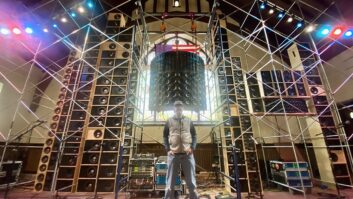

As a trumpeter and bandleader, Miles Davis was highly regarded for being incredibly innovative and creative. Yet he was equally extraordinary as a talent scout. Other jazz leaders in the modern era — such as drummer Art Blakey and pianist Horace Silver, who co-led the Jazz Messengers before splitting — were skillful recruiters, too. But Davis was particularly consistent in hiring players who, after departing his groups, made nearly as much of an impact on jazz as he did. One of them was alto-saxophonist Julian “Cannonball” Adderley, whose style and personality were nearly opposite to Davis’ cool, detached and sometimes arrogant persona.
Adderley played with Davis in the late ’50s, contributing to such landmark recordings as Milestones and Kind of Blue, but soon found his footing leading his own stellar bands, which featured such notables as keyboardists Bobby Timmons, Joe Zawinul (who wrote “Mercy, Mercy, Mercy,” the Adderley group’s biggest hit), George Duke and Michael Wolff; saxophonists Yusef Lateef and Charles Lloyd; and Adderly’s prodigiously talented brother, Nat, on cornet. Unlike Davis, Adderly always set out to be an entertainer, as well as a great musician and bandleader, so he became one of jazz’s most popular live attractions for a number of years. Like Davis, however, he also embraced funk and electonics later in his career. He died of a stroke in 1975 at just 46.
Re-Loaded (L-R): John Levy (Nancy Wilson’s manager), Marcus Miller, Steve Gadd,Terence Blanchard, Nancy Wilson, Tom Scott, George Duke and Gregg Field.
” />
The people behind Re-Loaded (L-R): John Levy (Nancy Wilson’s manager), Marcus Miller, Steve Gadd,Terence Blanchard, Nancy Wilson, Tom Scott, George Duke and Gregg Field.
Drummer and Concord Records co-owner Gregg Field and saxophonist Tom Scott are among succeeding generations of musicians influenced by Adderley’s musicianship and earthy attitude. They both met Adderley at different times and places. For Scott it was as a member of Don Ellis’ Big Band at the Monterey Jazz Festival in 1966. Not knowing what to say, he nervously asked Adderley if he gave lessons — he politely declined. Field met him in 1974 at the San Francisco club Keystone Korner while a teenager. The legendary saxophonist recognized the kid’s interest in jazz and invited him to a session at Fantasy Records in Berkeley, Calif., the next day for Love, Sex and the Zodiac, one of Adderley’s last.
Field and Scott crossed paths many times afterward during assorted sessions and performances, and as they got to know each other they discovered their mutual affinity for Adderley, even making it into a friendly competition to see who knew more obscure facts about him. But it was when Field attended a 2005 gig by Scott and pianist Roger Kellaway at a Santa Monica, Calif., jazz spot called The Vic that the wheels started turning in his mind about putting together an Adderley tribute album — specifically after hearing Scott and Kellaway’s rendition of Adderley’s “Sack o’ Woe” and noticing how much it excited the audience.
From his home studio in Tehachapi, about 120 miles northeast of Los Angeles, Scott recalls Field’s reaction after the show: “Gregg said, ‘Wouldn’t it be fun to do an entire record of Cannonball stuff?’ So we planned it and then it languished for a long, long time. We had a deal on one label lined up that ultimately fell through. Then Greg and I got pretty busy for a while. Finally, we went to Concord, Gregg’s label, and they said, ‘Let’s do it!’ After that things came together quite quickly.”
The co-producers agreed on the concept, selections and type of musicians they wanted on the CD. Field — whose label has recently enjoyed success partnering with Starbucks for Ray Charles’ Grammy-winning Genius Loves Company, Paul McCartney’s Memory Almost Full and the Love Letters to Ella (Fitzgerald) tribute — slanted the record for a general or possibly contemporary jazz audience. “I wanted the groove-oriented, straight-eighth-note repertoire of Cannonball’s, not the bebop,” Field says. “We cast the rhythm section with Steve Gadd [drums], Marcus Miller [bass] and George Duke with that specifically in mind. Those guys have serious jazz credentials, but at the same time can lay down a groove pocket for this kind of music.”

Trumpeter Terence Blanchard, Scott on saxophone and vocalist Nancy Wilson rounded out the project, along with bassist Dave Carpenter and organist Larry Goldings. Naturally, getting Duke, who played with Adderley in the later stages of his career, was a major coup. Field adds that landing Miller was also a great bonus: “You’ve got guys who are both record producers, and from my standpoint as the producer, when you get other guys who are also producers, they understand what the challenges are and that really helped me get everything I needed.”
But landing Wilson, who collaborated with Adderley on their groundbreaking Nancy Wilson/Cannonball Adderley album in 1961, was perhaps the most important catch of all from both a fan and marketing perspective. Field has known Wilson for many years and produced several of her CDs, along with a PBS television program. “It was simply a matter of calling and telling her what we were thinking about doing,” he states. “She said, ‘Absolutely,’ and didn’t even think twice about it.”
However, getting this dream band together in the same place at the same time turned out to be one of the more challenging aspects of Cannon Re-Loaded. Gadd is constantly touring and recording with the likes of Eric Clapton, Paul Simon, James Taylor and other high-profile performers, so “ultimately, we had to build the recording around his schedule,” Scott notes. “The other people fell in line, but Marcus Miller barely made it at all and was told by his management he couldn’t do it because he was finishing up a record project. He did it basically as a favor to me, and I really appreciated that. Of course, I’m sure he didn’t mind playing with those guys.” [Laughs]
Considering the wealth of material Adderley recorded between 1956 to 1975, choosing selections for the tribute was definitely daunting. Initially, Scott compiled a three-CD set of the tunes he thought had the best potential. Then he and Field narrowed them down to about a dozen. Wilson selected “Save Your Love for Me” and “The Masquerade Is Over,” also two of Field’s favorites from her work with Adderley. Basically, it became Adderley’s “greatest hits,” with a possibility of additional volumes later to get deeper into the catalog.
On November 27 and 28, 2006, at NRG Studios in North Hollywood (where Field often works), the project finally became a reality. Field comments, “I wanted this record to have a sound that was very much 21st-century state-of-the-art sonically, but I also realized that the musicians needed to play together. So they’re on every track as a group, there aren’t any overdubs and no edits between songs.” Scott eagerly agreed to that approach, and espouses what he says is Quincy Jones’ method of producing: “Get the very best people you can get in every field and encourage them to do the best work they can possibly do. If everything goes well, you’ll be a hero.”
Engineering the sessions was Don Murray, who had previously worked with Field, other Concord Records producers and many of the musicians on Cannon Re-Loaded. (Murray got his start at Sigma Sound in Philadelphia working with R&B hit-making producer Tom Bell in the ’70s.) The room at NRG where the album was cut is equipped with a modified Neve board that includes 24 channels of 1073 preamps and another 24 1081s, along with Flying Faders automation — no wonder it’s one of the most popular boards in town. Murray says he exclusively used the 1073s here, recording to Pro Tools and using only minimal outboard processing (rather than plug-ins).
Gadd and Wilson were in iso booths with clear lines of sight to all of the musicians in the tracking area. The singer used a Neumann M49, and the drummer was set up with a Sennheiser 421 on the kick, a Shure SM57 on the snare and AKG 451s on the hi-hat and toms. Miller was taken direct, as was Duke when he played Wurlitzer organ and Fender Rhodes; his acoustic piano was recorded using two AKG C-12s. A Telefunken 251 captured Scott’s sax and a Coles 4038 for Blanchard’s trumpet.
Murray, who won a Grammy this year for singer Patti Austin’s Avant Gershwin CD, notes of the sessions, “I’ve worked with a lot of them and know their sound, and what appropriate mic configurations would capture it best. It all fell together very well, and right from the beginning they all sounded great — within the first half-hour we were tracking. It actually was a pretty easy session to do. The tracks with Nancy really stand out and she sounds so great with everybody else. The musicians were incredible to work with. I rank it as one my most memorable sessions.”
The album was mixed during a week in March 2007 at Fields’ G Studio Digital in nearby Studio City by Josiah Gluck — who had a long association with the now-defunct GRP Records and is currently associate music engineer for Saturday Night Live — along with Field and Seth Present. In keeping with the straightforward approach to recording the album, relatively little was added at the mix stage. “I think we might have used the TC Electronic 6000,” Gluck says, “but the thing is, Don’s tracks are terrific and don’t need a tremendous amount. Greg was there to give me direction where he felt it was needed. Otherwise, it was just pretty much get a good balance and try to create a nice space around things. The challenge was knowing when not to do anything, then finding all the little gems and making sure everything was polished. To me, the great thing was getting paid to sit and listen to these guys. I would have loved to have been at the tracking sessions.”
Field concludes, “If Cannon heard this record, I know he would love it, and if he were making records now, they would hopefully sound something like this. That was one of the primary goals, and I think we achieved it.”

PLAY: Must Play
Country Preacher
PLAY: Must Play
Save Your Love for Me







